I was excited to hear that Theo Wanne was releasing a new tenor saxophone mouthpiece called the Gaia 3 a few months ago and asked Theo if I could review it. I had reviewed the original Gaia tenor saxophone mouthpiece back in 2009 and it was one of the best tenor saxophone mouthpieces I had reviewed in my opinion. Original Gaia Tenor Mouthpiece Review It had a beautiful lush, smooth as butter tone that I absolutely loved, but at the end of my time with the original Gaia tenor mouthpiece, I decided to send it back rather than purchase it because I felt like the original Gaia didn’t have the brightness and power I needed as a working sax player.
Years later, Theo came out with a Gaia 2 tenor sax mouthpiece which I tried also. Unfortunately, I didn’t review that tenor sax mouthpiece, but I remember the Gaia 2 sax mouthpiece was brighter and had more power than the original Gaia but I felt it had lost the round, fat, lush character in the tone that I loved about the original Gaia tenor sax mouthpiece. I ended up returning the Gaia 2 mouthpiece also………
That brings us to the Gaia 3 tenor saxophone mouthpiece that I am reviewing today. I was very excited to try this tenor sax mouthpiece out and see where Theo and his team had taken the Gaia 3 concept to.
Theo Wanne Gaia 3 7* Metal Tenor Saxophone Mouthpiece
Theo Wanne sent me a gold plated Gaia 3 tenor sax mouthpieces as well as a hard rubber Gaia 3 tenor sax mouthpiece to check out. Both saxophone mouthpieces are 7* tip openings which is my preferred tip opening on tenor sax mouthpieces with low to medium height baffles these days.
The mouthpieces were shipped with the usual high standards of the Theo Wanne company. Each mouthpiece comes in a perfectly designed box with stylish gold printing on it with all the details of the mouthpiece inside. Inside the box is a beautiful leather looking mouthpiece case. Each mouthpiece has a ligature included with it as well as a high quality perfectly designed card with specific direction on how to adjust the ligatures, the affects on the saxophone tone when the ligature is in different positions and directions on how to change the pressure plates on the ligatures.
The mouthpieces come with a reed replacer cap which is on the mouthpiece where the reed goes and the ligature is tightened down on the reed replacer cap to protect the mouthpiece in shipping and when you are not playing it. Although the reed replacer cap is a cool idea, the Gaia 3 mouthpiece does not come with a “regular” mouthpiece cap that you slide on the mouthpiece over the reed and around the ligature. This is a bit surprising as Theo has dialed in every detail pertaining to his mouthpieces and yet there is no mouthpiece cap for these mouthpieces as of yet! (*I did find that a Vandoren leather mouthpiece cap for metal mouthpieces I have fit on the Gaia 3 and around the ligature perfectly so that is what I have been using with this mouthpiece over the last month.)
Theo Wanne Gaia 3 7* Metal Tenor Saxophone Mouthpiece
As you can see below, the ligature on the Gold Gaia 3 mouthpiece is connected to the mouthpiece through screws on the ligature that tighten into holes on the sides of the mouthpiece. The mouthpiece comes with a hex screwdriver that can be used to loosen these screws and move the ligature forward or backwards in relation to the reed and mouthpiece table.
I personally liked the ligature in the middle hole setting of the five holes as it puts the ligature plate towards the rear of the reed allowing the reed to vibrate and flex freely but not so far back that I feel it might not put enough pressure on the reed to seal. I did experiment with the ligature up closer towards the reed tip but felt like the middle hole placement was the best for me.
Although I really like the built in ligature on the gold Gaia 3 tenor mouthpiece, it is really best if you have a set reed strength you use and get the ligature in the right position for you. Many times when I am putting on new reeds, I tend to play around with the adjustment of the ligature to try to positively affect the reed response for the better. You can’t do this easily with the Theo Wanne built in ligature because you have to loosen the screws and then tighten them back up in the new spot. Although, if I was playing this mouthpiece all the time and figured out my favorite brand and reed strength, I would have no problem using the built in ligature all the time if it responded well with the reeds.
Theo Wanne Gaia 3 7* Metal Tenor Saxophone Mouthpiece
Even before you look at the mouthpieces themselves, everything about the Theo Wanne packaging and presentation just speaks to quality and high standards. Just the process of opening the package and unpacking the mouthpiece brings about an excitement and anticipation that this mouthpiece you are about to play is going to be amazing!
Here is how the Theo Wanne website (save 15% by using this link) describes the new Gaia 3 tenor saxophone mouthpiece:
The GAIA 3 lends itself well to a traditional Jazz taste, but due to its amazing flexibility, it is at home in any style of playing. It comes in 24K gold plated or a unique thin-body premium hard rubber which has amazing vibratory qualities.
The GAIA 3 has a medium roll-over Shark Gill™ baffle, precision-sculpted inner sidewalls, and our True-Large-Chamber™ which is similar to the vintage mouthpieces of the 1940s but more evolved in design. Take a close look at our baffles, rails, and True-Large-Chambers™, you will see they are manufactured with a quality and accuracy higher than any other mouthpiece ever made, vintage or new!
SOUND
- Built to outplay Theo’s very best Vintage Florida Otto Link. Theo succeeded!!!
- Inspired by the genius of Dexter Gordon.
- Full, rich, and fat traditional sound with a big projection and plenty of edge.
DESIGN
- Includes our True Large Chamber! Rounded inner side walls all the way to the tip. Perfectly sculpted roll-over baffle.
- Crafted to the highest accuracy in the history of saxophone mouthpieces.
- Designed by Theo Wanne, the foremost expert on the design and manufacturing of vintage and new mouthpieces.
DETAILS
- Case: Beautiful Leatherette Case!
- Serial Number: Includes serial number showing care given to your mouthpiece.
- Plating: Reticulated 24K Gold plating with highlights on globe logo on metal mouthpiece.
- Premium Hard Rubber: The Hard Rubber GAIA 3 uses the finest vintage style hard rubber on the planet!
- Ligature: The metal GAIA 3 includes our integrated two-point contact 24K Gold Plated Liberty Ligature and Alive Gold pressure plate. The Hard Rubber GAIA 3 includes the Enlightened Ligature, rated #1 ligature in the world. To truly individualize your sound, try our premium Pressure Plates, which fit all of our mouthpieces and ligatures!.
- Cap: Patented Reed Replacer Cap. The most secure cap in the world.
- Bite Pad: User Replaceable Bite Pads allow you to peel and stick on new bite pads. Try our varying hardness bite pads to personalize the feel.
Theo Wanne Gaia 3 7* Metal Tenor Saxophone Mouthpiece
The mouthpiece itself has a beautiful gold engraving and a perfect looking symmetry and beauty to it. The mouthpiece engraving is as perfect as can be. Not a flaw or mistake anywhere. Each mouthpiece has a unique serial number on it which I really love as I know which mouthpiece is mine and if I decide to sell a mouthpiece everyone knows from the serial number that this is the mouthpiece I reviewed on my site.
The tip, rails, baffle, table and chamber all look perfect as well. Smooth, even, symmetrical…….flawless. The sidewalls are scooped out and the baffle is a medium height long rollover baffle that ends at a scooped out curve where the large chamber begins. To give you an idea of the size of the chamber, it is larger than a typical Otto Link chamber. Of all my mouthpieces, I think the chamber is closest in size to a NY Otto Link tenor mouthpiece I have in my collection but might be even bigger with the scooped out section at the chambers entrance.
The new Gaia 3 tenor sax mouthpiece has a new baffle design with what Theo calls a “Shark Gill baffle”. You can see these lines in the picture below. Matt Ambrose at Theo Wanne mouthpieces describes the new Gaia 3 mouthpiece like this on a SOTW (Sax on the Web) post about the mouthpiece:
The Gaia 3 is the culmination of a LOT of experimentation, prototypes, and trial and error. Theo figured out kind of a break-through in rollover baffle design that is really significant. I’m usually pretty conservative when talking about our mouthpieces and new features and designs because I’m sensitive to the fact that too much sensationalism can be seen as hype—this is not hype. More projection, more complex tone, super quick response, the Gaia 3 is a significant step forward in my opinion. There are some chamber geometry changes as well, and also notable are the precision grooves in the baffle (see picture below). We have experimented with acoustics and airflow for many years and developed this design to augment the efficiency of the mouthpiece. We are really proud of the Gaia 3.
Here is Theo’s take on the Gaia 3 tenor mouthpiece in his own words from the same post on SOTW (Sax on the Web):
In many ways I consider the GAIA 3 to be my crown jewel of mouthpiece design to date. It has a large chamber with a roll-over baffle mouthpiece like an Otto Link. But the similarities actually end there; it is otherwise a very different mouthpiece. It has a very uniquely shaped large chamber, the window is much wider and longer, the baffle is an all-together new design too. I’m not talking about the obvious shark-gill baffle lines, but the shape of the baffle both side to side and lengthwise. A lot of research and development went into this mouthpiece, and as a company we are very proud of it.
I know the shark-gill baffle is the obvious visible feature, so I’ll mention that it works with boundary layer effect similar to how a sharks rough skin helps it glide faster through water, or how the dimples on a golf ball help it travel with less resistance through the air. I’ve enjoyed experimenting with this principle as many of the effect of it are counter intuitive, which makes experimenting fun 
We launched the GAIA 3 at the NAMM show and have gotten just great feedback since. Often I wonder if others will like a new design as much as I do when designing it, however, the GAIA 3 feedback has been overwhelmingly positive. Just now got an email about the GAIA 3 from Jan Garbarek, so figure I’d share: “The GAIA 3 played perfectly right from the very first note. A little bit like coming home, really. Once in a while it happens. Its simply a great piece, congratulations! A leap forward from my point of view. Sometimes I get all excited about a piece, but then, when I play it in an actual concert, I recognize weaknesses, and I realize it will take too much work and no guarantees to try to overcome the problem areas. That hasn’t happened here. All I find so far are possible areas to explore and develop. Kind of inspiring, actually….”.
Theo Wanne Gaia 3 7* Metal Tenor Saxophone Mouthpiece
I play tested the Theo Wanne Gaia 3 tenor mouthpiece with some Rigotti Gold 3-3 1/2 tenor saxophone reeds as well as some Boston Sax Shop 2 1/2-3 saxophone reeds that I have been using over the last few months also. Both brands of reeds lined up perfectly with the tip rail of the Gaia 3 and played great.
I provided five sound clips with a variety of reeds below as I think the tone was slightly different when using the different reeds. I know five is a lot but I honestly had a hard time figuring out which reed and clips I liked the best. I probably recorded 10 clips but in the end decided to post four of them and one with reverb added.
- The 1st was with a Rigotti Gold 3 Light reed and is just me noodling.
- The 2nd was with a BSS (Boston Sax Shop) 2 1/2 reed (although the BSS 3 reed was killer also…..)
- The 3rd clip is with a Rigotti Gold 3 1/2 Light reed. It started as me noodling but then I went into the Max Ionata solo on “Home at Last” that I have been trying to memorize.
- The 4th clip is more noodling on another Rigotti 3 1/2 reed but then I go into a repetitive groove that I thought was kind of neat although I way overplayed it. Sorry!
- The 5th clip is the same as the 4th clip but with reverb added just for the heck of it.
Theo Wanne Gaia 3 7* Metal Tenor Saxophone Mouthpiece
So, what did I think of the new Gaia 3 tenor sax mouthpiece? I thought it played incredibly well. At a soft volume, the Gaia 3 mouthpiece has a smooth lushness that reminds me of the original Gaia mouthpiece that I absolutely loved. When pushed, the Gaia 3 tenor mouthpiece can play with much more volume than the original Gaia. With a harder reed like the Rigotti Gold 3 1/2 Light it can really wail! Although the extra volume can be substantial, the Gaia 3 tenor sax mouthpiece doesn’t get overly bright or edgy like many mouthpieces do when you push them. It seems to me that the more I pushed it, the more focused and in your face it would get which is what you want in a working sax players mouthpiece.
I felt like the Gaia 3 mouthpiece also had a great balance between being focused in tone but also a tone that is fat in character and substance. The softer reeds gave it a more smooth, fat and lush tone and the harder reeds gave it a more complex and overtone full tone with more highs to my ear.
There was a quality to the sound that is hard for me to put into words also. The richness and character made me feel like I was listening to something original, authentic and real. The tone seemed like it had multiple layers to it perhaps. I’m not even sure what all this means but this is how I felt listening back to different parts of the clips.
The tone was even throughout the range of the horn which made faster lines sound really even and smooth. The altissimo was easy to play and the intonation was excellent.
Theo Wanne Gaia 3 7* Metal Tenor Saxophone Mouthpiece
I really think Theo Wanne hit a home run with this new Gaia 3 tenor saxophone mouthpiece. There was a round smoothness to the original Gaia that I absolutely loved but I felt like it didn’t have the power I wanted. The Gaia 2 had more of the power but I felt like it lost the round smoothness I loved with the original. With the Gaia 3 mouthpiece, I hear the smoothness and lushness in the tone that I loved with the original but also the power that is easily available when it is pushed.
I felt like the Rigotti Gold reeds gave the Gaia 3 tenor sax mouthpiece a little more brightness and edge while the Boston Sax Shop reeds gave it a bit of a darker huskier tone. The harder Rigotti 3 1/2 reeds were still easy to play and didn’t get all stuffy and tubby sounding like harder reeds can sometimes do on other mouthpieces. Listen to the sound clips below and decide for yourself. (The Star Wars quote in clip 4 and 5 was not on purpose but once I was in to it, it was too late to escape Darth Vader’s calling……..)
The coolest thing I love about the Gaia 3 tenor sax mouthpiece is that I feel like there is a lot of exploration to do with it. Many mouthpieces that I review, I play them and feel like I have them figured out. How they sound, what they can do, etc……. I feel like if I played the mouthpiece for years it would still be pretty much the same result.
Even though I have been playing the Gaia 3 for a month, I feel like there is a lot of exploration still to do with it. This is exciting for me because I feel like if I keep playing it and working with it that new avenues and pathways will be opened up. I think part of that feeling stems from the fact that it is so reed friendly. I still don’t know which reed is the best because so many reeds play so well on it. This is exciting for me because I have a feeling I won’t get bored with it.
Theo Wanne Gaia 3 7* Metal Tenor Saxophone Mouthpiece
Next up to review is the hard rubber Gaia 3 which I found to be a bit darker sounding than the metal Gaia 3 mouthpiece. After reviewing the hard rubber Gaia 3 mouthpiece, I hope to do a side by side review of both Gaia 3 tenor sax mouthpieces by playing the same songs and lines on both sound clips so that we can compare and talk about the differences between a metal mouthpiece and a hard rubber mouthpiece that look and feel identical to me. Does the material make a difference? We will see………
If you like the sound and look of the new Gaia 3 tenor sax mouthpiece by Theo Wanne, you can find them at Theowanne.com (save 15% by using this link). I have agreed to be an affiliate for Theo Wanne as of this review so if you purchase a Gaia 3 tenor saxophone mouthpiece from this link, neffmusic.com will receive a small commission on the sale. (This helps to pay for my site and keep the saxophone related reviews and articles coming to you…..).
If you are lucky enough to play a Gaia 3 tenor saxophone mouthpiece or have any other thoughts or comments, I would love to hear what you think in the comments below. Thanks, Steve
Theo Wanne Gaia 3 7* Metal Tenor Saxophone Mouthpiece-Rigotti Gold 3 Light Reed
Theo Wanne Gaia 3 7* Metal Tenor Saxophone Mouthpiece-BSS (Boston Sax Shop) 2 1/2 Reed
Theo Wanne Gaia 3 7* Metal Tenor Saxophone Mouthpiece-Rigotti Gold 3 1/2 Light Reed-Selmer 404 Ligature playing some of Max Ionata’s Solo on Home at Last
Theo Wanne Gaia 3 7* Metal Tenor Saxophone Mouthpiece-Rigotti Gold 3 1/2 Light Reed-Selmer 404 Ligature-Noodling then into a Funky Groove that goes on way too long……Dry
Theo Wanne Gaia 3 7* Metal Tenor Saxophone Mouthpiece-Rigotti Gold 3 1/2 Light Reed-Selmer 404 Ligature-Same as the clip above but with added Reverb
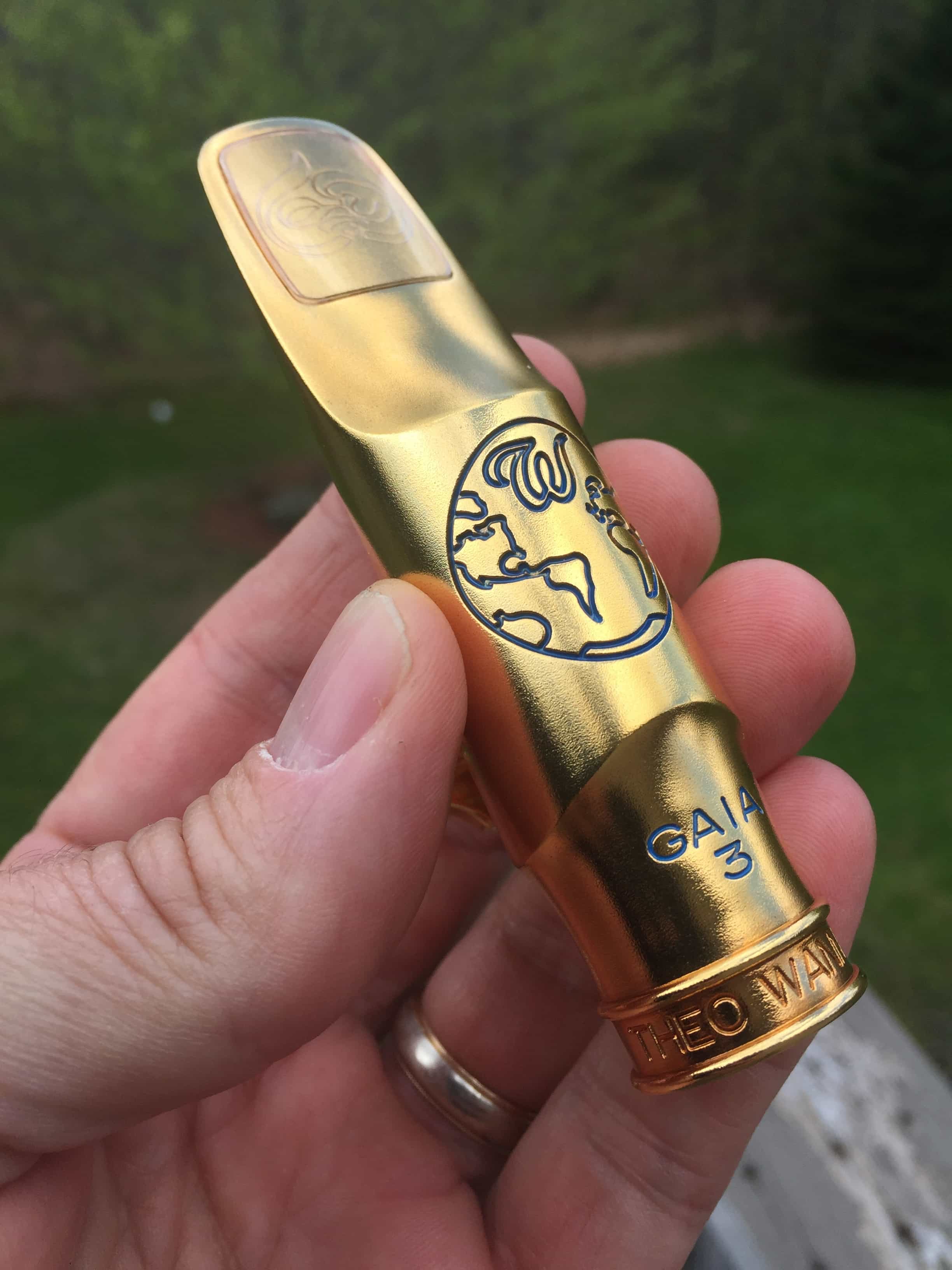
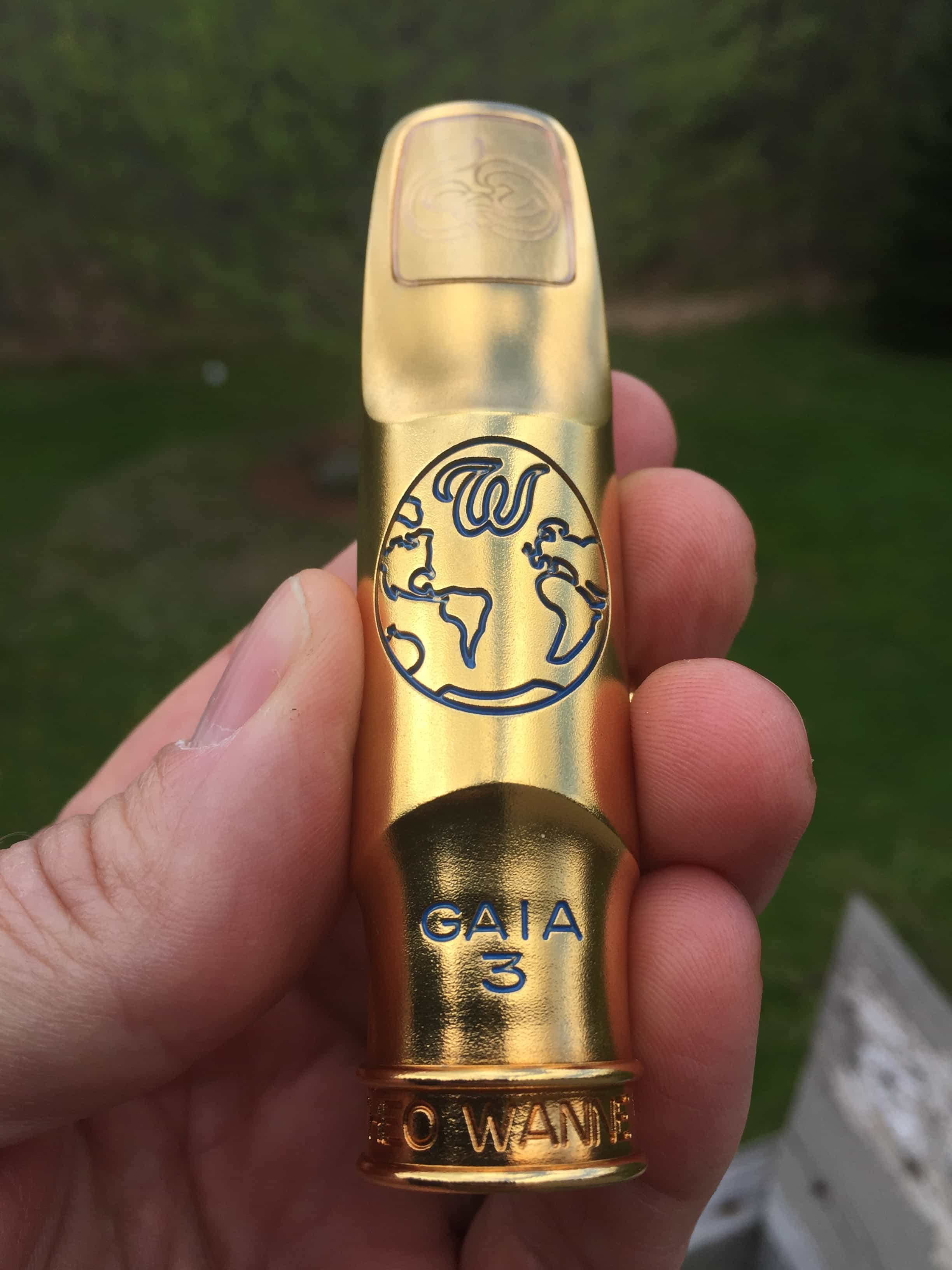
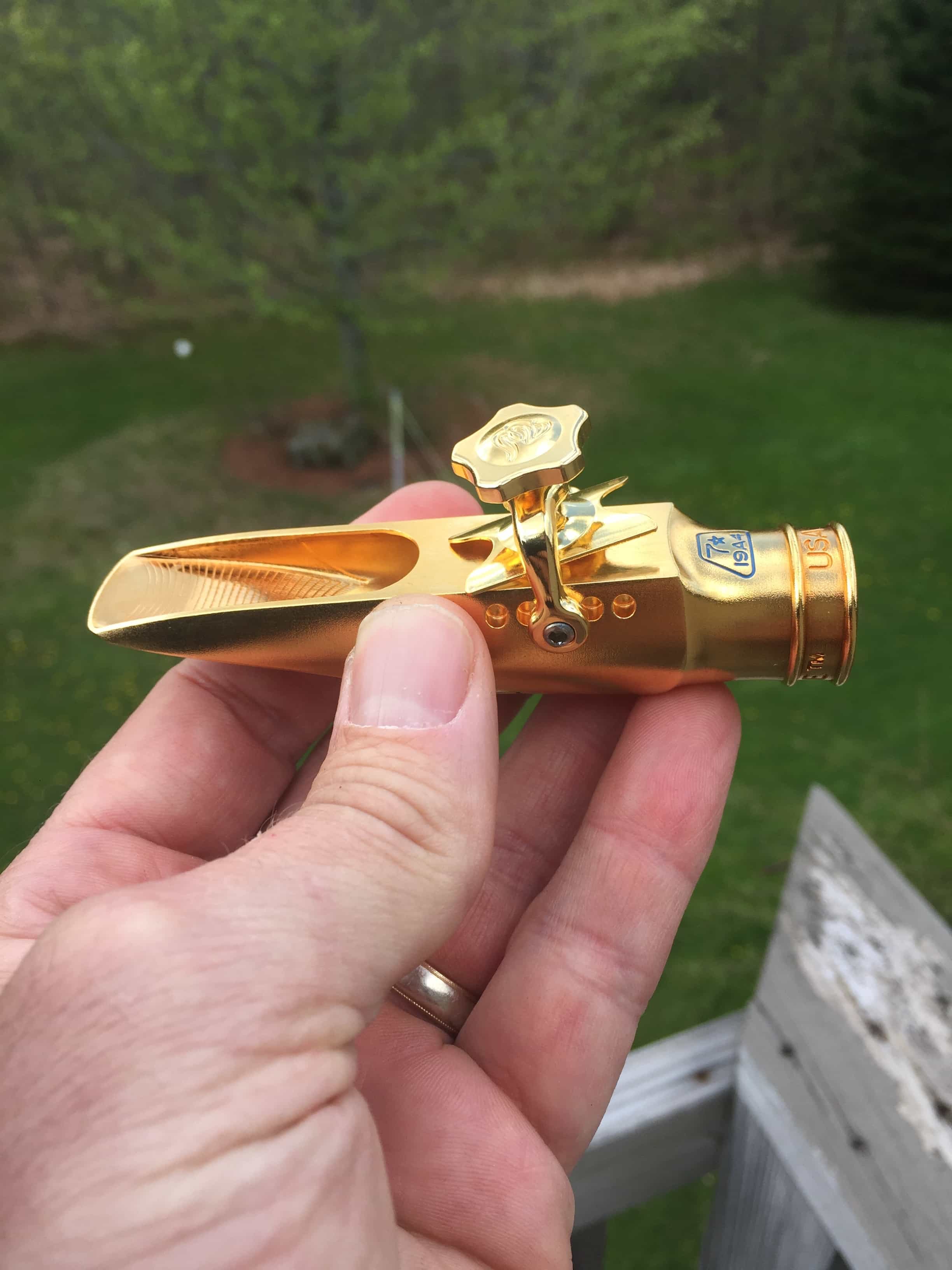
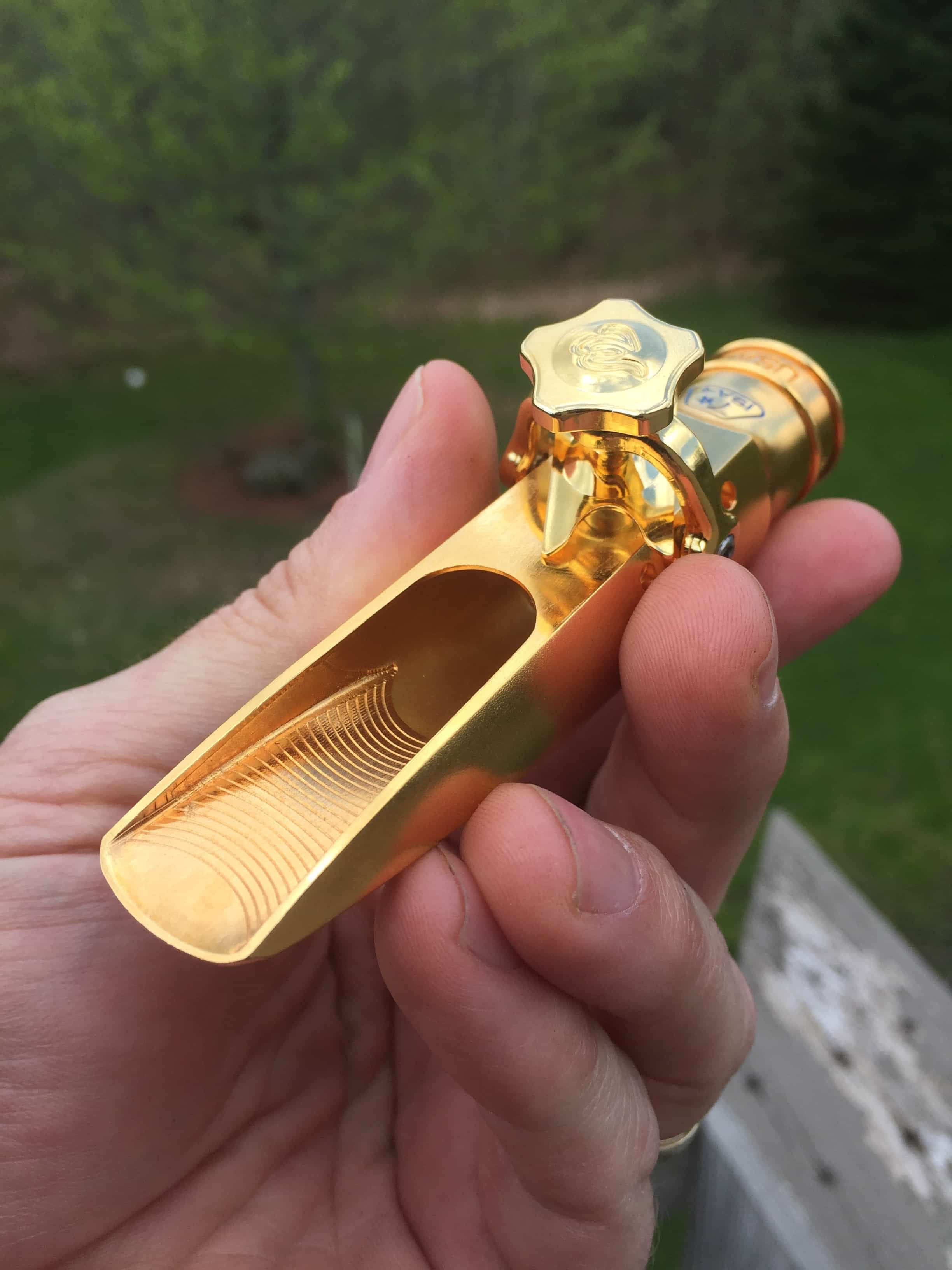

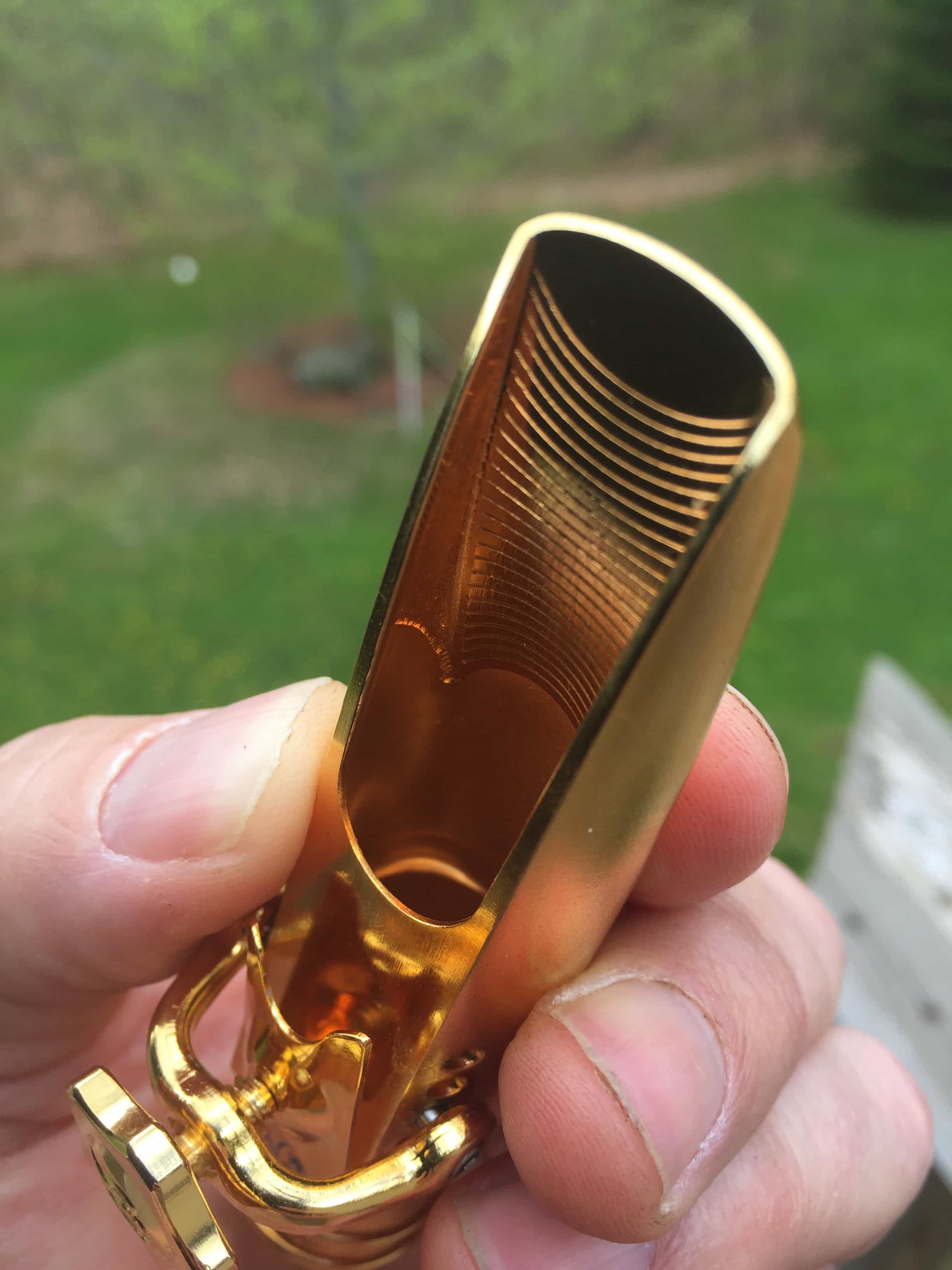
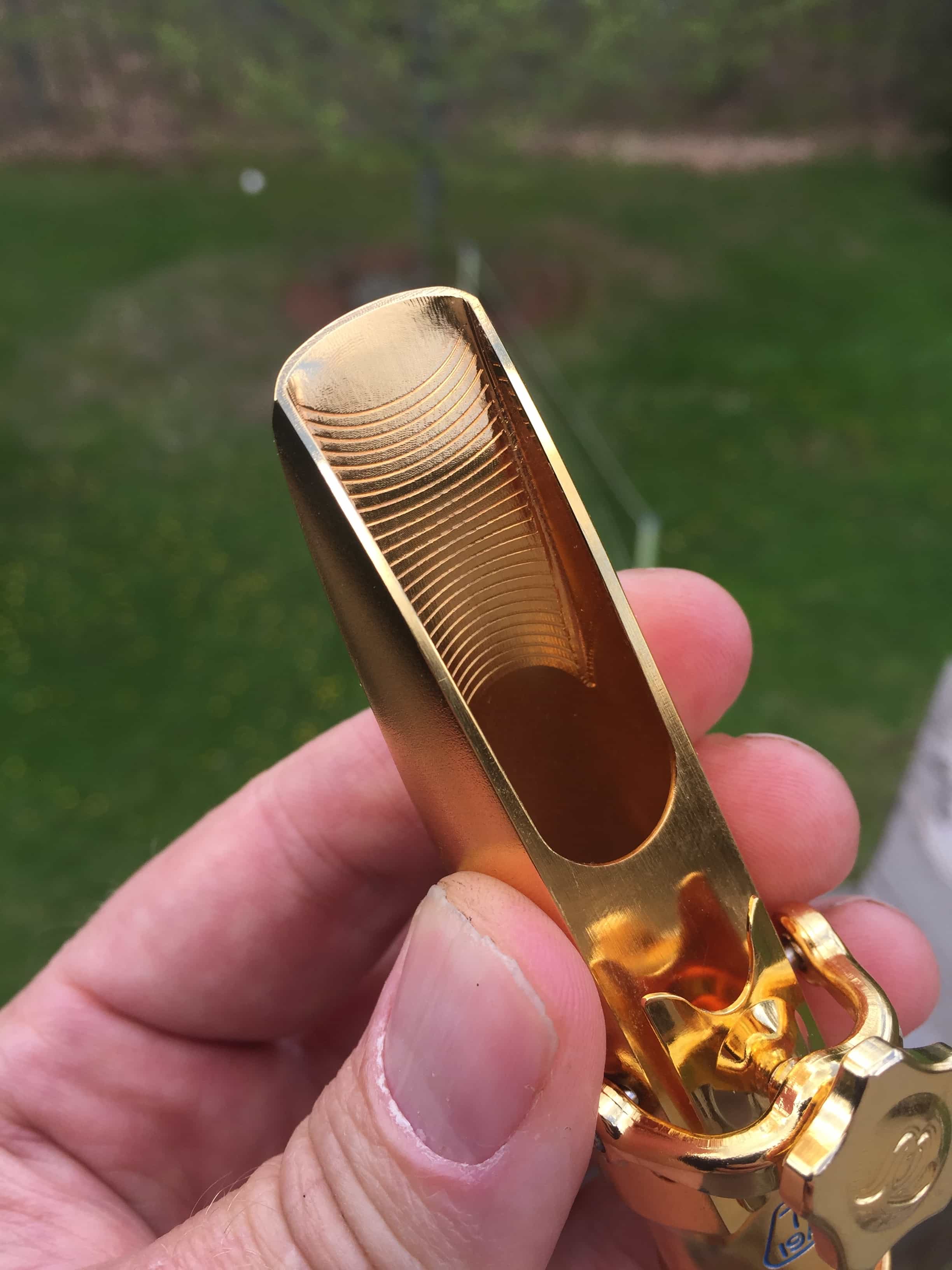
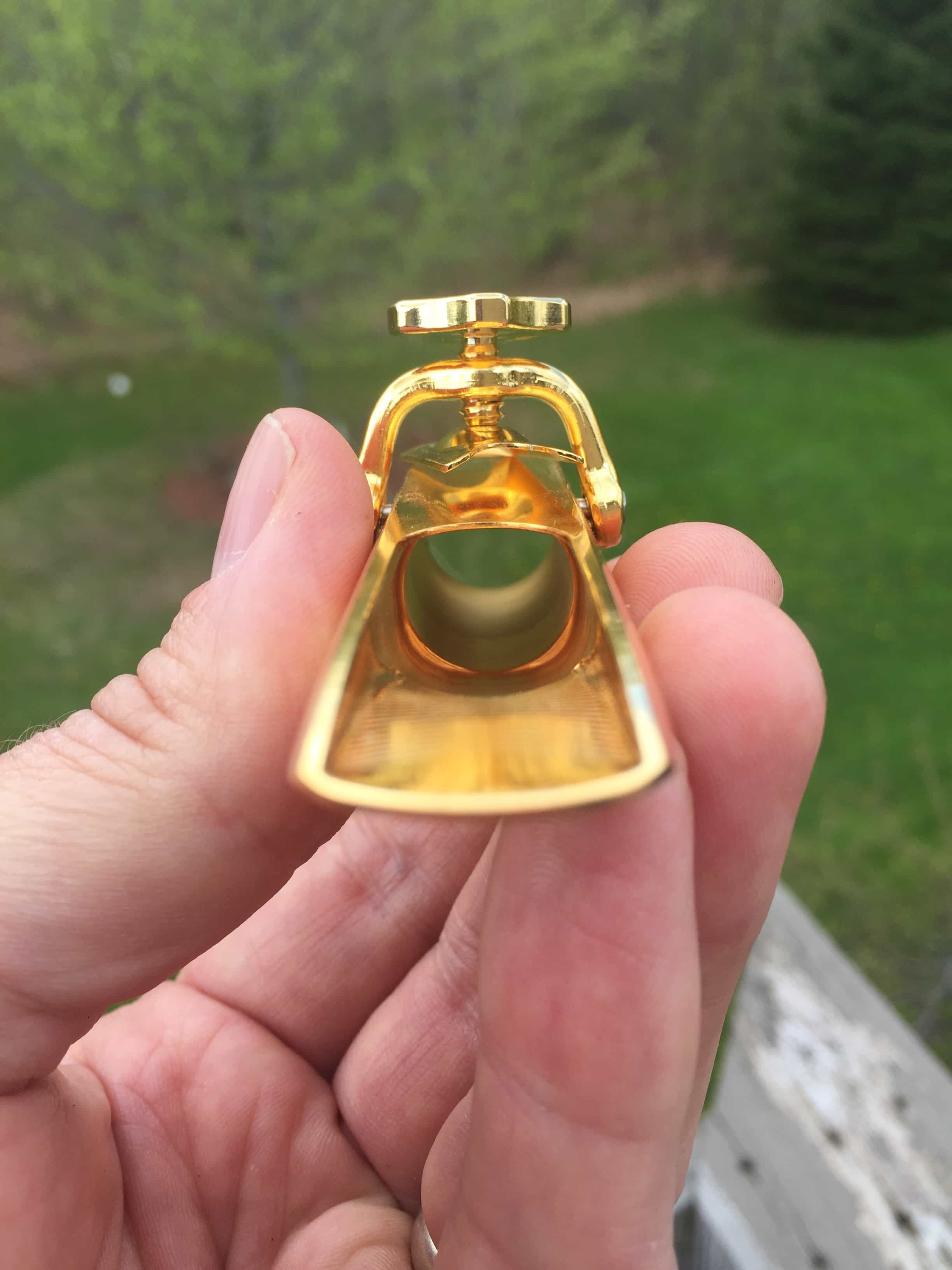
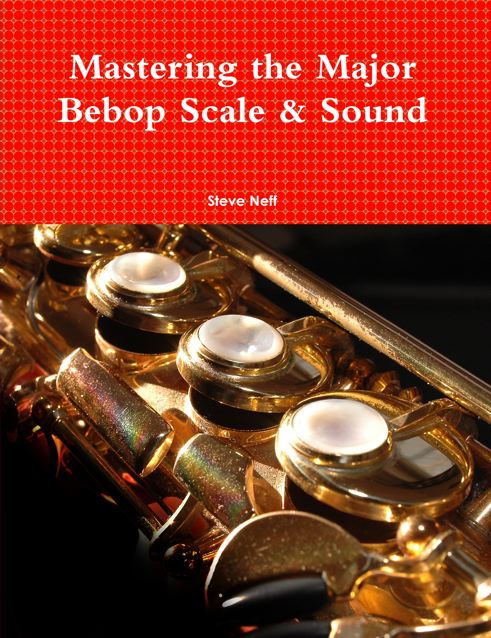


WOW…
I may actually HAVE to try this…
I have stayed away from Theo’s mouthpieces…
The reason is my style of playing… I make a 10mFan’s Merlot sound like it has a High Baffle and have found very few mouthpieces that I can’t overblow (by overblow I mean get that “edge” that I think is too much)… and, until this one, have been able to shatter glass.
Of your audio samples, I like the ones with the Selmer 404 best… those mellow harmonics/sound I’m looking for…
Most built-in ligatures miss the mark.
I’ve only found one “built-in” ligature that really works… Geoff Lawton’s…
I can’t wait for the HR/Metal comparison… might find just what I’ve been searching for… and downsize from my .155 Lawton and 9* Merlot… my easy blowing mouthpieces… :)
Pat, This is definitely one to try in my mind! I’m not sure if the change was the ligatures or the harder reed on the Selmer 404 ligature clips. I’m assuming it is the harder reed. I didn’t try the Selmer lig on the two softer reeds. Steve
100% agreed Steve. I play one and it is for me the ultimate metal tenor piece perfectly at ease in any music style. Every minute I spend on it is a source of pleasure and inspiration. Thanks for your excellent review!
I totally agree Marc! I think I wrote it in the review but it’s like there are layers and depths to the mouthpiece that make it so interesting to play and explore. I just want to stop reviewing mouthpieces and spend 6 months with this one……..haha!
Steve, thanks. I respect and appreciate your reviews. I owned a Gaia once or twice and they are quality pieces. I too am eager to try the Gaia 3 one day but man oh man Wanne mouthpieces maintain a hefty price point (prohibitively so) both for new ones and for used ones (priced for used is derived from what someone paid for the mpc when it was new).
Courtney,
I agree the price is high…
But consider these numbers…
I paid $120 for my Berg 130/0 offset M in 1965..
In today’s money that would be $966.28…
Just something to think about…
Pat
Pat, Are you sure about that? I thought a Berg was like 120 when I graduated high school in 1985. I might be wrong. How much was a Mark VI in 1965? Steve
Steve Mark VI’s listed for $795 with TrayPak case…
I paid $400 OTD…
Bergs were an expensive item… cuz we ALL liked them…
MAYBE closer too $100++… so, with today’s money…still $805 and change…
I think may have paid $75 or 80 for my Duckbill in 1966… and Bergs were more…
And the Berg you bought wasn’t an original… I believe it was made by his wife… after she took over the company.
Only thing for sure… yours was not made the same way as the early Pre-CBS ones (reference to early Fenders… lol) Pat
Definitely with the Selmer ligature but I’d like to hear it on a Java 3 reed. I’ve just listened to you on the Bill Evans recording with you on a Java 2.5 and think the Java on the Gaia could give something extra to the sound.
Phil, I have a boatload of used Java 3’s in a shoebox somewhere. I’ll see if I can find a good one and see how it plays. Thanks, Steve
I just received this question by email:
Q. Wow, the Gaia 3 in 7* sounds absolutely terrific. Out of curiosity, why did you choose to use the Selmer 404 on it? Is it hard to remove Theo’s ligature?
Does the Selmer ligature negatively affect the finish on the Gaia?
A. I’ve gotten a lot of comments about how the Gaia 3 sounds the best with the Selmer 404 ligature. I want to be clear in that the sound of the Gaia 3 clips with the Selmer 404 ligature is probably 98% due to the harder Rigotti Gold 3 1/2 Light reed. That is a fact in my mind. The ligature was just a side thought for me where I just decided to see how the Selmer 404 fit on it and how it would sound. It fit great but at this point I haven’t done a side by side of the built in ligature and the Selmer 404 to know the exact difference. I will say that when I first put on the Selmer ligature , the 3 1/2 reed I had put on felt a bit stiff with the built in TW ligature. It played easier with the Selmer ligature but I believe that is because the TW ligature was positioned towards the rear of the reed and the Selmer ligature was placed more towards the vamp of the reed.
Theo’s ligature is not hard to remove at all with the hex screwdriver but does take a few seconds of concentration to do. I wouldn’t want to be doing it in a dark club that is for sure.
The Selmer 404 doesn’t impact the finish or plating of the Gaia 3 that I can see. I use that ligature on all of my metal Otto Link mouthpieces also and don’t see any scratches or problems.
Hope this answers some of your questions, Steve
Steve, for sure, place the Theo ligature in the second hole. My Kali also always performed best with RED Java 3’s, 4 out of 5 good reeds in a box.
Also, the change in pressure plates on the Theo ligatures make a difference. The Vintified, Titanium, and Alive Gold always played best for me, and the Heavy Brass/Gold (much thicker plate) will change the balance of higher partials and darken it a bit.
Nice review as always Steve. ??
I noticed a common thread in the tone of 404. Whether people like that added accentuation to the high frequencies (sounding more modern yet masks out some of the low frequency warmth to my ears) or using the built-in ligature to rather have a more ironed and rather limited envelope in high frequencies but with the payoff of hearing a bit more low-mid frequencies, sort of my impression of some of Dexter Gordon’s recordings tone profile). Since the window is larger in this design, I would try different reed cuts to see which ones take advantage of that bigger open area window design a bit more. Perhaps something with thicker vamp but longer cut and thinner tip (even manually adjusted) for a bit balancing sparkle. I tried this mouthpiece against my 10MFan The Classic and found the tone profile of Gaia 3 felt a bit limiting for my taste. There is a sort of a dominating presence of a vibrant midrange frequencies in Gaia 3 tone that perhaps created my impression perhaps due to the bigger window and I think elongated raised floor design. However I think the same solid core and wonderful magic of Theo’s facing curve creates an unparalleled experience of ease in playability and response. It is shocking and invigorating!!! In the same session with Theo and Bryon, I brought it up to them about wanting a bit more of that highs and especially lows and they gave me the Slant Sig model mouthpiece which had a wonderful tone character yet missing some of the core and playability of Gaia 3. I thought (and shared my thought with them) that perhaps if Theo would find a meeting point somewhere between the Slant Sig and Gaia 3, I would be really curious to see how that future hybrid mouthpiece would play to get some of that wonderful tone and spread of Slant Sig but with just about enough added core and response to make it more of a performance line mouthpiece. Steve, I think this tone is probably a good fit for your taste especially combining the response / reed vibration on the tap from the larger window and the high mid frequency spike of Rigotti reed and Selmer 404. Personally I like a less modern and more lyrical tone, with a bit of resistance to rely on for shaping the tone and expression. Something that while has expressiveness and vibrancy but (if you are in that mindset) also inspires you to play with the spirit of folklore or classic and also being suitable for delicate sounding ballads as well. BTW, I would love if I could see a Lawton design ligature rails / ligature design instead of those screw holes to have full freedom of adjusting the ligature position. I found as the reed gets used and the definition gets impacted by the wetness or softness of the fibre, I nudge the ligature closer to the tip to bring back some of the reduced definition and focus. It’s not practical to do that with fixed ligature anchor points like this. Thanks again for your effort and making this great review. ???
Arya, Keep in mind that the Selmer 404 ligature was used with different reeds. The BSS reeds are much darker in my opinion and the Rigotti have more brightness and edge to them. I am not sure how much of the sound difference can be attributed to the ligature change. I would have to do a comparison clip with the same reed to find that out……. Steve
Hey Steve, In the past when you wrote that you really loved a mpc I ran with it and along the way purchased Phil-Tone tenor and alto mpcs and a Gaia Soprano mpc. Very very happy with all purchases. So based on what you’ve written about the Gaia 3 I’m inches away from getting one. I tried a Gaia 1 a few years ago but it didn’t seem to have the projection of the Theo Wanne Brahma (discontinued), which I ended up buying. I also have TW Durga 1, #8. For metal tenor the two TW mpcs are my go to, depending on the setting. So my question is: based on your “rave review”, is the Gaia 3 going replace your Link as your go to mpc? Since I do a lot of amplified work I think I’ll still need my Durga, but wanting to replace the Brahma since it does seem to have it’s limits on how much it can be pushed and the Gaia 3 seems like it will fit right in the middle – more than the Brahma but not a Durga. Your thoughts, and thanks for another wonderful review.
Frank, I don’t really have a go to mouthpiece for tenor and haven’t had one for years. I have a collection of some really great pieces and am not sure which one I would play if I had to choose only one. I really wanted the Gaia 3 because it is so interesting to me. I played it for about a month and there just seems to be a lot it can do and places musically to explore with it. Some mouthpieces I play and I pretty much feel like I get everything about the mouthpiece. How it sounds, what it can do, the plus and minuses, etc…… With the Gaia 3 I felt like there are a lot of layers and areas to explore with it. I wanted to keep it ,so I can spend a lot more time with it and see where it takes me if that makes sense. I don’t think it will have the power and brightness of the Durga as would be expected but I really dig where the tone sits for me on the dark to bright scale. Personally, I would probably find the Durga to be too bright for my tastes so the Gaia 3 sits right where I like the tone to be. This is a personal choice though so it is really up to you and I can’t tell you if you will like it better or not. I don’t think I have ever played a Brahma so I can’t speak about how it compares to that one. Good luck on your decision. Steve
Steve, thanks for the quick reply. I expect the Gaia 3 as well to sit darker than the Durga but provide an improvement over the Brahma. TW discontinued that model shortly after I bought the Brahma and replaced it with the Mantra which also was discontinued. It looks like this latest generation of the Gaia was developed to sit in that middle range, “”OL enhanced” of the TW lineup.
I had sworn off any further mpc buys until I read your reviews about the Gaia 3. But you hadn’t steered me wrong with the Gaia Soprano piece, the Phil-Tone Riff Alto, Tenor Intrepid & Equinox either. I’ll do some further consideration on this mpc. It’s now on my radar.
On the ligature thing. I was finding the Gaia 3 rather temperamental in response using the built in lig, with it seeming to need a lot of embouchure work some days, and the lower register being a bit too dark. So I looked around in my drawer and took out a trusty Rovner Light, which I’ve often found works generally well on most pieces. Suddenly all the effort went and the Gaia played all the time with great ease (which it only did some of the time before). I also tried a cheapo two screw lig that fitted, with much the same result. I think ligs that press on the middle of the reed can sometimes allow the sides of the reed to warp, which doesn’t happen with things like the Rovner or a Silverstein. So next gig will be with the Rovner, as I can’t imagine the Gaia playing any more effectively and the uncertainty of response is not there.
Andrew…
I agree about the “built-in” ligatures…
The only one that I found that really works is/was Geoff Lawton’s…
His gives full support to the reed… (I play a .155 he made for me)…
I find that most modern, bottom, 1-set-screw ligatures don’t properly hold the reed correctly (I’m sure I’ll hear back on this…lol).
And Rovner… a very good choice, also… I will sometimes throw on a Rovner Dark or a Rovner Versa (with NO plates)… finding that the Dark will calm down the Lawton while the Versa lets it sing…
I use a Silverstein on my HR Tenor Merlot… definitely holds the reed securely, but lets it sing… OR another Versa… same no plates…
However, there was a time on the road… when my 2-screw ligature broke… and I used a rubber band… ah, the good ol’ days… lol
Pat
The Rovner largely worked, but I thought I could get more out of the Gaia, so ordered a Silverstein (metal Otto Link Size 5), which arrived today. First impression is that this really is the best solution: everything seems easier, especially on the lower notes. The Silverstein keeps the edge you get with the original lig, but it is somehow more singing and fuller. Sunday’s gig will tell, but I’m pretty happy: this really is such an interesting mouthpiece, given its variety of tone and response.
Steve,
When you mentioned that the mouthpiece has a very large chamber and long rollover baffle, I couldn’t help but be reminded of the Barone SNY (which is one of my favorite pieces). How do these mouthpieces compare in your mind?
Steve,
Do you think it’s a good GB mouthpiece?
Mitch, That is a hard question to answer as I don’t play GB gigs anymore. The true test for me is always out on the gig and although I think the Gaia 3 would be great on that kind of gig, I have thought that about many other pieces and then when I get to that 4th set at the end of the gig I can’t hear myself to save my life. It can certainly handle the dinner set and the 2nd set I think. The question for me when I consider this is if there are enough highs and brightness in the tone to cut through a loud set. To me it is not about volume at all on those sets because I have taken mouthpieces to gigs that were wailin’ super loud pieces but they didn’t cut through the mix because they were in that midrange area where the guitar and keyboards are at and the tone would get lost in the overall sound of the band. The mouthpiece that cut are the mouthpiece that have the brightness on that third and fourth set. I think the Gaia 3 has it but it’s hard to say until you get on the gig. I hope that makes sense. It also depends on your gig setup and if you have a monitor and all that. Steve
Steve, I answered my own question on a GB/wedding last night. No dinner set, just bam right into loud pop/rock, etc. Band had three horns so it was a perfect setting for me to test it out. It worked well after adjusting to a less focused sound of the SaxScape Live. I felt like I was IN the sound rather than it going out in front of me. Anyway, everything you have mentioned in the review is spot on. So far I’ve only tried D’Addario 3S unfiled as this has been my preferred reed.
I just received a 6* which I think suits me better. Such a flexible mouthpiece with tons of core and color. Projects like crazy without sacrificing tone.
Hi Steve I really liked the Gaia, I was wondering if it is powerful enough to play outdoors with a Fusion band.
Stephano, It all depends on your sound system I think. If you have a good monitor I think it would be fine but if I had no monitor it might be hard to hear over the loudness of the band but that is the case no matter what mouthpiece you play. I think it can get plenty loud but you have to decide if it has enough brightness in the tone so that it will cut through the mix of the band. The Gaia 3 is brighter and more powerful than a typical metal Otto Link tenor mouthpiece in my opinion but it still has that Otto Link type core to the sound which I really like. It’s thicker and more hearty sounding than a Guardala type tenor mouthpiece in my opinion. Hope this helps, Steve
Steve nailed it.
I’ve been on the 6* for a year now, it works great for me. Jazz to 3 horn section in pop, etc. bands. I just ordered another as a backup since TW is now making the GAIA 4 and has a limited stock of 3’s left. I tried the 4 and it is really great also, I like the 3 better. The 4 does have more core but FOR ME it tunes differently and I’ve become settled into the 3. The 3 FOR ME is more versatile.
Mitch, I have a Gaia 4 here to review. Looking forward to trying it as soon as my hernia surgery is healed. I’m giving it 3 more days which will be the 2 week mark since the surgery. Thanks for your insights on the differences between the two pieces. Steve
Steve,Looking forward to your review, and hope your recovery is going well!Thanks,Mitch
Here are some songs I was asked to solo on, Pink Floyd type material. I’m using the GAIA 3 6* and a D’Addario 3M unfiled. I”m using Rigotti 3.5 M now.
https://www.youtube.com/watch?v=YGdJ-nokdVk&t=244s
https://www.youtube.com/watch?v=7R5DMJdQPRE
Nice! I think you sound great on those recordings. Love the tenor sax tone! Steve
Mitch,
I really like both the band (I really like Pink Floyd) and your sound on the tenor!
Excellent choice the smallest tip opening possible, 6 *.
Thanks for posting.
Giuseppe.
Mr. Paliga,
I listened to other sound clips of “Children of the Moon” on youtube and I must say that the sound of your sax is really beautiful and in perfect harmony with the mood of the songs!
For what little my appreciation is worth … congratulations.
Giuseppe.